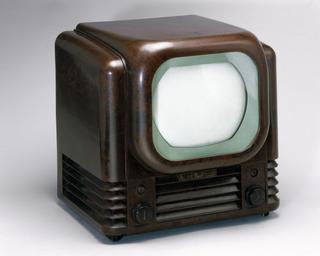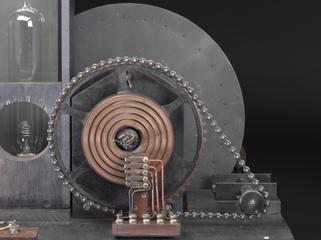
Home-made equipment for 30-line television reception, 1929-1935
- Made:
- 1929-1935 in United Kingdom




Home-made equipment for 30-line television reception, unknown maker, British, 1929-35. Comprises Nipkow disc, neon lamp, viewing lens, phonic-wheel unit, home recorded discs of signals, square punch for Nipkow disc).
Home-made equipment for 30-line television reception, unknown maker, British, 1929-35.
When television was in its infancy some people made their own televisions receivers using equipment like this. A Nipkow disk was a key part of the system. In the camera it was an image scanning device formed of a metal or plastic disk with a series of holes punched around the edge. As light from the image passed through the holes in the spinning disk, falling onto a light sensitive component, the signal for transmission was created. At the receiving television the signal was converted back into light and passed through holes in a similar spinning disk to recreate the image.
Details
- Category:
- Radio Communication
- Object Number:
- 1973-427
- Materials:
- metal (unknown), plastic (unidentified), brass (copper, zinc alloy), paper (fibre product) and foam
- Measurements:
-
valve: 85 mm x 60 mm x 45 mm, 106.27 g
neon lamp: 120 mm x 60 mm x 55 mm, 220 g
phonic-wheel unit: 65 mm x 145 mm x 70 mm, 680 g
square punch: 10 mm x 55 mm x 10 mm, 11.65 g
Nipkow disk: 508 mm, .01 g
viewing lens: 20 mm 150 mm, 840 g
- type:
- television receiver
- credit:
- Donated by C. H. C. Swaine




